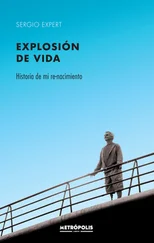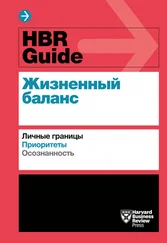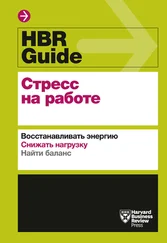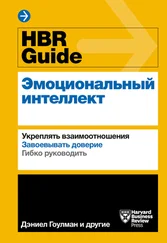1 ...6 7 8 10 11 12 ...37
About the Companion Website
This series is accompanied by a companion website:
www.wiley.com/go/mayer/mountsinai/criticalcare

The website includes:

Case studies: 15.1, 27.1 and 29.1
Color versions of images: 5.2, 6.4, 16.1, 36.1 and 48.1
Links to video clips: 1.1, 3.1, 3.2, 3.3, 4.1, 4.2, 5.1, 5.2, 5.3 and 6.1
Multiple choice questions for all chapters
In addition the following images are also available online:
Chapter 4
Online figure 4.1(A) Pericardial effusion (Peff) short axis window transesophageal echo (TEE). (B) Pericardial effusion four chamber window transthoracic echo (TTE) demonstrating right ventricular (RV) diastolic collapse. LV, left ventricle.
Online figure 4.2Splenorenal recess with hemothorax view. Free fluid (arrow) can be seen between the spleen and kidney.
Online figure 4.3Kidney view. The normal hyperechoic appearance of the pelvis (arrow) below the cortex and medulla.
Online figure 4.4Hydronephrosis. The anechoic appearance of the pelvis (arrow) below the cortex and medulla indicates dilation of the renal pelvis consistent with hydronephrosis from obstruction, e.g. nephrolithiasis.
Online figure 4.5(A) Transverse view of abdominal aortic aneurysm (AAA). (B) Transverse view of AAA at level of dissection. (Courtesy of Richard Stern, MD, Mount Sinai Hospital.)
Chapter 5
Online figure 5.1Tracheostomy bedside insertion, showing a dilator above the tracheal ring.
Chapter 13
Online figure 13.1HeartWare centrifugal flow device.
Online figure 13.2Syncardia total artificial heart.
Chapter 24
Online figure 24.1Barotrauma in a patient with status asthmaticus. Patient has extensive subcutaneous emphysema and required chest tubes for bilateral pneumothorax.
PART 1 Basic Techniques and Procedures
Section Editor: John M. Oropello
CHAPTER 1 Airway Management
Michael Kitz
Icahn School of Medicine at Mount Sinai, New York, NY, USA
Airway management is a vital life‐saving skill for the ICU provider.
The provider should be capable of using a broad range of devices including endotracheal tubes, supraglottic devices, and direct and video laryngoscopes.
Understanding airway anatomy, performing a thorough airway examination, and recognizing potential challenges of both bag‐mask ventilation as well as endotracheal intubation are essential
Formulating a plan (often with a backup in mind), proper monitoring, meticulous attention to patient positioning, and immediate availability of equipment and medications are necessary to provide safe and effective care.
It is crucial to know when to call for assistance, when to attempt a ‘rescue technique,’ and when escalation to invasive airway management (i.e. cricothyrotomy or tracheostomy) is necessary.
Functional anatomy of the upper airway
The human airway consists of two openings: the nose, which leads to the nasopharynx, and the mouth, which leads to the oropharynx. These passages are separated anteriorly by the palate and they join posteriorly, although still separated via an imaginary horizontal line extending posteriorly from the palate. Inferiorly past the base of the tongue, the epiglottis separates the oropharynx from the laryngopharynx, or hypopharynx. The epiglottis serves to protect against aspiration by covering the opening of the larynx (the glottis) during swallowing. The larynx is a cartilaginous skeleton comprised of nine cartilages as well as ligaments and muscles. The thyroid cartilage functions partly to shield the vocal cords. Inferior to the cricoid cartilage lies the trachea, which extends to the carina at approximately T5 where it branches into the right and left mainstem bronchi. The right mainstem bronchus takeoff is more straight and vertical, making it the most likely path taken by a deep endotracheal tube placement.
Innervation of the upper airway is from the cranial nerves. Sensation to mucous membranes of the nose is supplied by the ophthalmic division (V1) of the trigeminal nerve anteriorly and the maxillary division of the same nerve posteriorly. The glossopharyngeal nerve provides sensation to the posterior third of the tongue as well as the tonsils and undersurface of the soft palate.
Below the epiglottis, sensation is supplied by branches of the vagus nerve. The superior laryngeal branch divides into external and internal segments. The internal branch provides sensation to the larynx between the epiglottis and the vocal cords. Another branch of the vagus nerve, the recurrent laryngeal nerve, provides laryngeal sensation below the vocal cords as well as the trachea.
Motor supply to the muscles of the larynx is from the recurrent laryngeal nerve, with the exception of the cricothyroid muscle (vocal cord tensor), which is innervated by the external branch of the superior laryngeal nerve. All vocal cord abductors are controlled by the recurrent laryngeal nerve.
Complete airway assessment includes taking a history and a physical examination, noting any findings indicative of possible difficulty with mask ventilation, endotracheal intubation, or both.
While airway management in the ICU can often be urgent or even emergent, failure to recognize predictors of a difficult airway can have potentially dire consequences.
The most likely predictor of airway difficulty is a history of previous difficulty. Other ‘red flags’ include a history of head and/or neck radiation, airway or cervical spine surgeries, obstructive sleep apnea, presence of a mediastinal mass, or certain chromosomal abnormalities or inherited metabolic disorders.
Time of last oral intake should be determined, if at all possible, as clear liquids within 2 hours or solid meals within 8 hours put the patient at higher risk for aspiration. Other risk factors for aspiration include gastroesophageal reflux disease (GERD), hiatal hernia, pregnancy, diabetes (gastroparesis), and morbid obesity.
Physical examination should include assessment of the oral cavity as well as external characteristics of the head and neck, again noting potential difficulties with mask ventilation and/or intubation ( Table 1.1).
Mouth opening, presence of facial hair, and presence or absence of teeth/dentures should be assessed. Any loose teeth should be noted and dentures should be removed to avoid dislodgment and potential aspiration.
The Mallampati classification describes the size of the tongue in relation to the oral cavity, which is a clinical sign developed to aid in the prediction of endotracheal intubation difficulty. The test is traditionally performed on a seated patient with the head in a neutral position, mouth opened, with the tongue protruding with no phonation. Scores are assigned based on the visibility of the oropharyngeal structures. A Mallampati class I score is indicative of relatively easy endotracheal intubation while a score of IV suggests the possibility of difficult intubation when taking other clinical signs into account ( Figure 1.1).
Читать дальше













